From Gilgit to Karachi and from Lahore to Quetta, extremist Sunni terrorist groups appear to have declared an open season on the minority Shia community in Pakistan. Despite the expressions of outrage and condemnation by top political leaders and civil society organizations against the wanton targeting of the Shias, the fact of the matter is that the complicity of the state agencies (partly by design and partly by default) in the mass murder of Shias is too glaring to ignore.
In the northern portion of Pakistan-occupied Kashmir – Gilgit-Baltistan – Pakistani authorities have systematically tried to change the demographic composition of the territory by settling Pashtun Sunnis in the area. This policy of the Pakistan government not only violates the Jammu and Kashmir State subject rules that forbid any non-state subject from settling down and buying property in the state, it has also given rise to sectarian tensions in the area. The Sunnis, under state protection and patronage, have steadily pushed the local Shia community to the edge by capturing the business and trade in the area. Starting from 1984, state sponsored pogroms of the Shias have been carried out in Gilgit-Baltistan. The recent outbreak of tensions in Gilgit, where three Sunni policemen were found to be involved in target killing of Shias, is a natural consequence of the policies that Pakistan has followed in the occupied territory.
Shias in Karachi have been in the cross-hairs of Sunni extremists for years now – Shia doctors in particular have been regularly gunned down in the city. In Kurram agency of FATA, the Shias have been cut off from rest of Pakistan by the Sunni terrorists for over 3 years. Despite all sorts of assurances the Pakistani authorities have utterly failed to stop the killing of Shias in these areas. Balochistan’s capital Quetta has become something of a killing field for the Shias. While Balochistan is predominantly Sunni, there is in Quetta a large settlement of the Hazaras who are Shias. Baloch society has been traditionally secular in their outlook and the Hazaras, who trace their origins to the Mongols, have lived peacefully. But in recent years, there has been a systematic targeting of members of the Hazara community and the suicide attack on a Shia procession in Quetta last week, in which around 70 people were killed and over a hundred injured, is only the latest in a series of outrages that have been perpetrated against the Hazaras in Quetta.
Like in Gilgit-Baltistan, in Balochistan too the Pakistani authorities have allowed the sectarian groups to function with impunity. According to reports in the Pakistani and Western media, the Pakistani intelligence agencies have allowed Quetta to become the headquarters of the Taliban. Worse, the ‘agencies’ reportedly promoting talibanisation through extremist Sunni groups like the Sipah-e-Sahaba and Lashkar-e-Jhangvi, both of which are closely aligned to the Taliban, in order to counter the Baloch nationalist forces. Given the deep antipathy of the Taliban and their affiliates for the Shias – the Taliban carried out genocide of the Hazaras in Afghanistan after they occupied the Shia lands in that country in the mid 1990s – the killing of the Shias in Quetta comes as no surprise. In Pakistan’s heartland of Punjab, the extremist Sunni groups hold sway. In fact, the growth of the Sunni terrorism started in the district of Jhang in Punjab where the Sipah-e-Sahaba Pakistan came into existence. Over the years, the SSP has spread its network all over Punjab and the attack on Shias in the heart of Lahore killing over 40 people comes as no surprise.
While the Sunni-Shia divide is as old as Islam, the bestiality on display in Pakistan in recent years can be traced back to the geo-politics of the third quarter of the 20th Century and to the policies of Gen Ziaul Haq’s military regime. The watershed year was really 1979 when not only did the Soviet’s invade and occupy Afghanistan, but there was also the Islamic (actually Shi’ite) revolution in Iran. Before 1979, while there were clear cut Sunni-Shia differences at the theological level and even occasional rioting bloodshed was relatively limited. The Shia-Sunni armed conflict got accentuated after the American involvement in the Afghan Jihad, which happened just at the time when the Saudi-Iranian rivalry started playing itself out in Pakistan. Fanning the flames of sectarian hatred generated by these two factors were the policies of Gen Zia military dictatorship which had a clear bias in favour of the Sunnis.
The Iranian revolution in 1979 had shaken up the predominantly Sunni Sheikhdoms in the middle-east. To prevent the export of the Islamic revolution from Iran to their domains, the Sheikhdoms used sectarianism as an instrument of policy. Sunni Islam was also the natural ally of the Americans in their not so covert war against the Soviets in Afghanistan. After all, bulk of the fighters, or if you will Mujahideen, were Sunnis, many of who adhered to a puritanical version of Islam, which incidentally was rabidly anti-Shia, something that suited the Americans who had burned their bridges with Shia Iran. Add to this the deliberate divide and rule policy adopted by Gen Zia who for political reasons fuelled sectarian differences by providing the Pakistan army's patronage to the worst sort of radical mullahs who started openly spouting hatred against the minority Shias.
The relationship between ordinary Shias and Sunnis underwent a transformation after Zia imposed Islamisation in Pakistan. The Shia clergy, which had become very aggressive after the Khomeni regime took power in Iran, organised a mammoth rally in Islamabad against the Zia regime, which they accused of fostering Sunni personal law on the Shias. Although Zia was forced to back off and concede the Shia demands, this show of force convinced Zia and by extension the army establishment, including the infamous ISI, of the need to cut the Shias down to size. Exploiting an existing fault-line between Shia landlords and Sunni tenants in Jhang, the Pakistani agencies unleashed the extremist Sunni organization Sipah-e-Sahaba Pakistan (SSP) on the Shias. This was the time that sectarian differences started being settled through bullets on a mass scale.
Alongside, the SSP indulged in the most virulent hate speech against the Shias, going to the extent of bringing to bear the theological differences to start a campaign demanding that Shias be declared non-muslims, a la Ahmediyas. The Shias too started organizing themselves and the Tehrik-e-Fiqh-e-Jafferia (TFJ) came into existence. Both the SSP and TFJ formed their militant wings and started targeting each other. The Shias, who comprise around 15% of Pakistan’s population, were however, outnumbered and outgunned. The Sunni outfits were flush with arms and money which had flooded Pakistan due to the Afghan ‘jihad’ against the Soviets. What is worse, the Pakistani state and its infamous agencies patronized the Sunni jihadist outfits which were involved in the targeting of the Shias. Jumping into the fray were the Saudis and Iranians who fought their proxy war in Pakistan using the extremist Sunni and Shia groups respectively, and providing them money and weapons to kill each other.
Until the mid-1990s, the Shia-Sunni violence was limited to targeted killings of leaders and activists. But this form of violence soon graduated to mass killings, with Shia Imambargahs being stormed by gunmen. The Sunni extremists in Pakistan received a massive boost after their ideological twins, the barbaric Taliban occupied Afghanistan. Suddenly, many of the Sunni extremists had a ready-made safe haven to which they escaped after massacring Shias. Despite being clients of the Pakistan army, the Taliban rejected all requests from Pakistani authorities to hand-over some of the most notorious Sunni terrorists who had taken refuge inside Afghanistan. Inside Pakistan, the more radical elements in the extremist SSP formed the Lashkar-e-Jhangvi.
The formation of the LeJ allowed the SSP to operate over-ground and participate in politics. The network of the SSP spread so deep into Pakistan’s body politic that the current head of the SSP’s new avatar, Ahle Sunnat wal Jamaat, has claimed that nearly 25 MNAs from across the political spectrum have been elected to parliament with the its backing. In 2002, the Pakistani military dictator, Gen. Pervez Musharraf, released then SSP chief Azam Tariq to win the vote of confidence in the National Assembly for his puppet prime minister, Zafarullah Jamali. While the SSP was strengthening its political position, the LeJ was continuing with its Shia killing campaign. There was a lull in anti-Shia violence after the fall of the Taliban regime in Afghanistan in 2001. But with the resurgence of the Taliban around 2005, the massacres of Shias once again started, this time with even greater ferocity. Using gunmen to storm Shia mosques was passé. The weapon of choice became the suicide bomber, which has been used to devastating effect in almost all the recent attacks on Shias.
But apart from the religious hatred that makes its kosher for the Sunnis to massacre the Shias, the targeting of Shias today serves a political objective of the Islamists viz. destabilizing the Pakistani state. As a result, the Sunni extremists are killing two birds with one stone. This is, in a sense, a replication of the strategy that the al Qaeda used in Iraq, where it used the Sunni suicide bombers to target Shias and their holy places to spread chaos and anarchy. The question is how long will the Shias take these wanton massacres lying down? Unless the Shias are reconciled to their fate as fair game for the Sunni extremists and are willing to be reduced to the status that the Ahmediyas suffer in Pakistan, they will retaliate and give as good as they get. The big problem that the Shias face is that their militant arm – Sipah-e-Mohammed – has been debilitated. Its revival may depend in large measure on the role that Iran plays to build up a Shia counterforce to the Sunni terrorist groups. The repercussions of any such step on the part of Iran on the relations between Sunni Pakistan and Shia Iran (as also Iraq) will be quite severe. But much worse will be the ramifications of a Shia backlash on the already tottering state of Pakistan. At a time when Pakistan is facing the blowback of its jihadist policies and is being targeted by its ‘strategic assets’, and is also in the throes of an insurgency in Balochistan, a Shia-Sunni war could well be catastrophic.

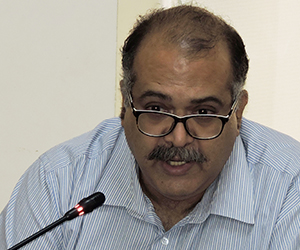
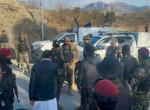
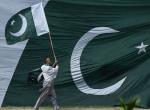


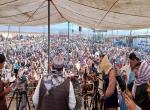
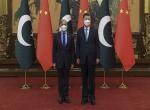
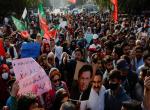
Post new comment